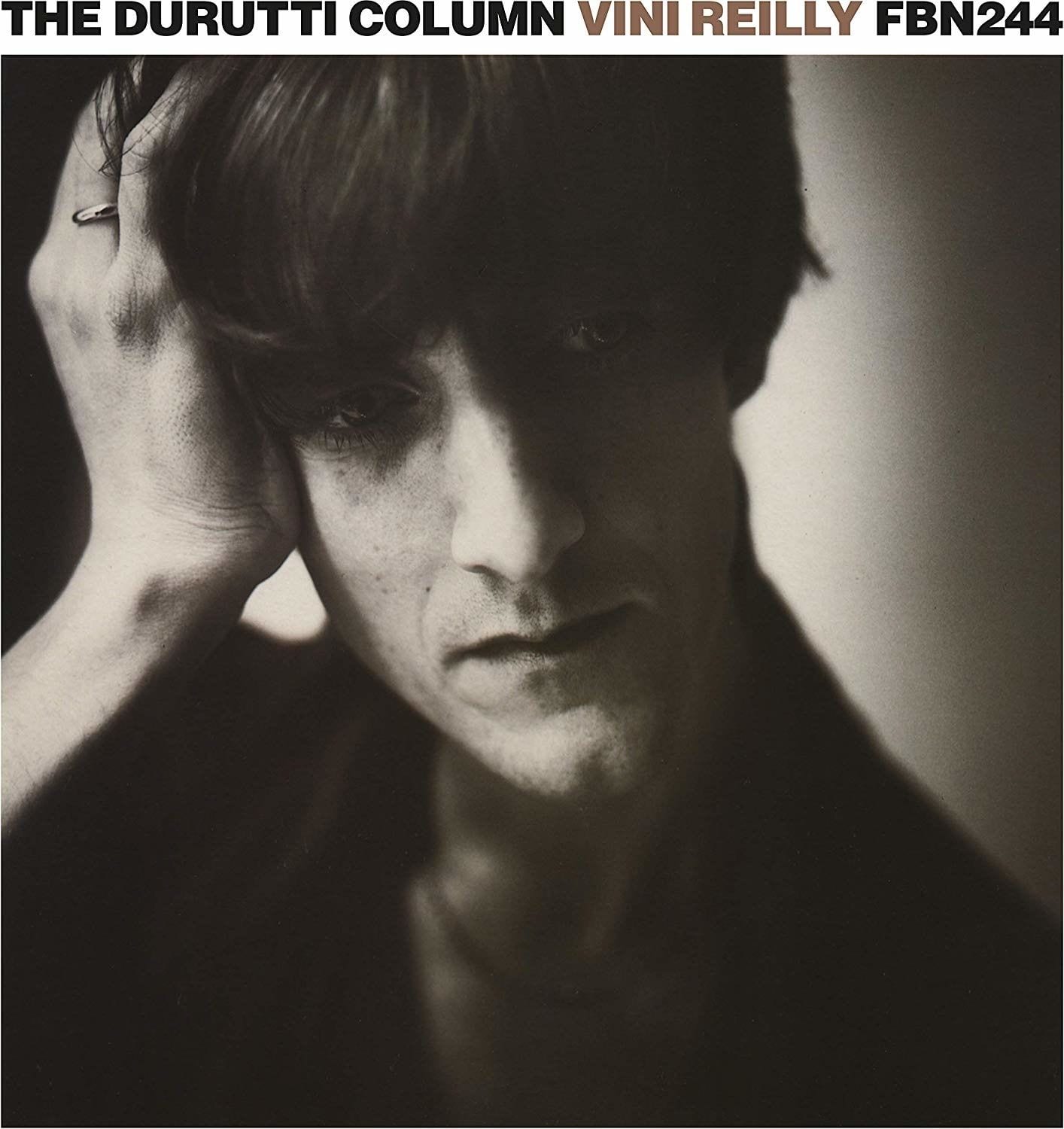
The working title was The Durutti Column Sampler. It’s not difficult to understand, though, why the seventh Durutti Column album ultimately was named for the band’s primary member, Vini Reilly. In 1989, Reilly’s profile had never been higher, and it wasn’t due to his day job. Reilly was the featured guitarist and keyboard player (and, depending on whom one talked to, musical director) on Morrissey’s debut solo album, Viva Hate. There was a delicious irony in the quiet, painfully unassuming Reilly taking such a consequential role in one of the most anticipated, buzzed-about albums of the decade.
Ten years earlier, Tony Wilson had made Reilly the inaugural signing to his fledgling Factory Records label, imagining the mop-topped, enigmatically handsome guitarist as a new kind of pop star. It probably surprised only Wilson that the Durutti Column, with their experimental, uncategorizable, largely instrumental soundscapes, never rose above cult status. Yet here was Reilly in 1989, playing on songs that were Top 10 singles and in heavy rotation on MTV. If there were ever a time to make his name a selling point, this was it.
Likewise, the sound of Vini Reilly was meant to convey the Durutti Column to a wider, more mainstream audience. This was a relative matter. After all, the only other regular band member, drummer/manager Bruce Mitchell, said in a contemporaneous interview he “would never trust anyone who is not a snob”, while Reilly himself lamented the plight of the working class—because they didn’t own “books by Graham Greene or [Bernard] Shaw”. Durutti Column were unapologetic aesthetes, and Vini Reilly is first and foremost, like all Durutti Column records, an aesthetic affair.
Any commercial-minded changes in approach are subtle. The album is short on the electronic percussion that was creeping into Durutti Column’s work. Reilly’s wispy singing, which made Nick Drake sound like Mick Jagger, had been polarizing. It is absent from Vini Reilly altogether. Instead, vocals are provided by samples as well as opera singer Liu Sola.
What Vini Reilly gains from its namesake’s newfound notoriety is focus. The album doesn’t sound all that different from its predecessors. Likewise, the defining characteristic, Reilly’s stark, echo-assisted guitar tone, remains unique and inimitable. There’s no mistaking it. But the essence of his work had never come through more purely or concisely, and there is an argument to be made that it hasn’t since.
Reilly has been labeled a musical “genius”, a term that gets used a bit too loosely in describing artists who aren’t easy to pigeonhole and have intense cult followings. But if Reilly’s immense technical ability warrants the term (he was self-taught), even more impressive is his staggering, possibly unparalleled ability to create music that is simultaneously warmly nostalgic and devastatingly mournful.
This ability is at the forefront on Vini Reilly‘s strongest, least-forgettable tracks. Right from the beginning, “Love No More” uses an airy acoustic arpeggio and haunting sampled vocals to breathtaking effect. It doesn’t just evoke the saddest imaginable scene from a European art-house film; it puts the listener right into the scene itself. “William B” combines Reilly’s more percussive, staccato electric style with a ghostly voice. The two “Opera” pieces naturally ratchet up the emotion into rapturous melodrama.
If this all would seem unbearably bleak, the sadness is tempered by the gorgeously plangent and undeniably hopeful “Red Square”, accomplished with no more than Reilly’s perseverant riffing and some whimsical piano. Furthermore, it is almost possible to hear verse-chorus-verse progressions and pop chords in the likes of “Pol in G” and “They Work at Home”, the latter aided by Mitchell’s typically expressive drumming. “People’s Pleasure Park” proves Reilly adept at creating a funk-inspired, slap-bass rhythm, though that rhythm can’t quite be reconciled with his abstract-rockabilly soloing.
All Reilly’s, and Vini Reilly‘s, emotions, all the evocations and techniques, and even any popular aspirations, come together seamlessly in the stunning “Otis”. Rightly regarded as one of the Durutti Column’s greatest, most definitive works, it takes a pulsating fingerpicked rhythm and overlays broad strokes, soulful filigrees, and pained passages. A sampled Tracy Chapman wafts through, singing something about “another sleepless night”, while Otis Redding himself adds a plea to “come back, come back”.This is music that can not merely be listened to because listening to it means experiencing it.
Because of its reliance on more organic textures, Vini Reilly has aged very well. The remastered sound has never been richer, and this new package adds a spoil of extra material. The entire four-song Womad Live EP, recorded in 1988 with Mitchell and Sola, presents elegant pre-album versions of “Otis” and “Finding the Sea”. The handful of demos, while pretty similar in arrangement, are even more haunting than the finished versions. The two tracks from the Italy-only Dry compilation are odd and forgettable.
More than worthwhile, though, are the ten selections from the sought-after Sporadic Recordings outtakes compilation. Serving as more of an expansion of Vini Reilly, they provide even further evidence of the man’s range, from blues (“Buddhist Prayer”), to rock (“Real Drums”), to garagey shredding (!) (“Pathway”). Putting a bookend on this unforgettable if all-too-short phase of the Durutti Column’s and Vini Reilly’s career is “For Stephen Patrick”, a string quartet piece dedicated to Morrissey himself. Not surprisingly, Vini Reilly did not meet with mainstream acceptance. But it remains an ideal insertion point for a truly singular talent.

